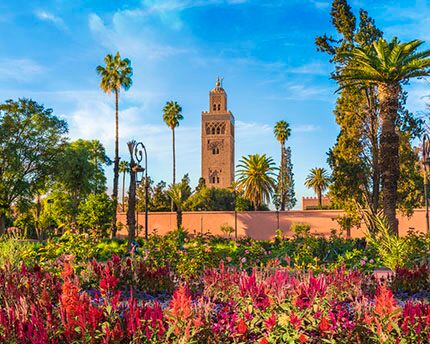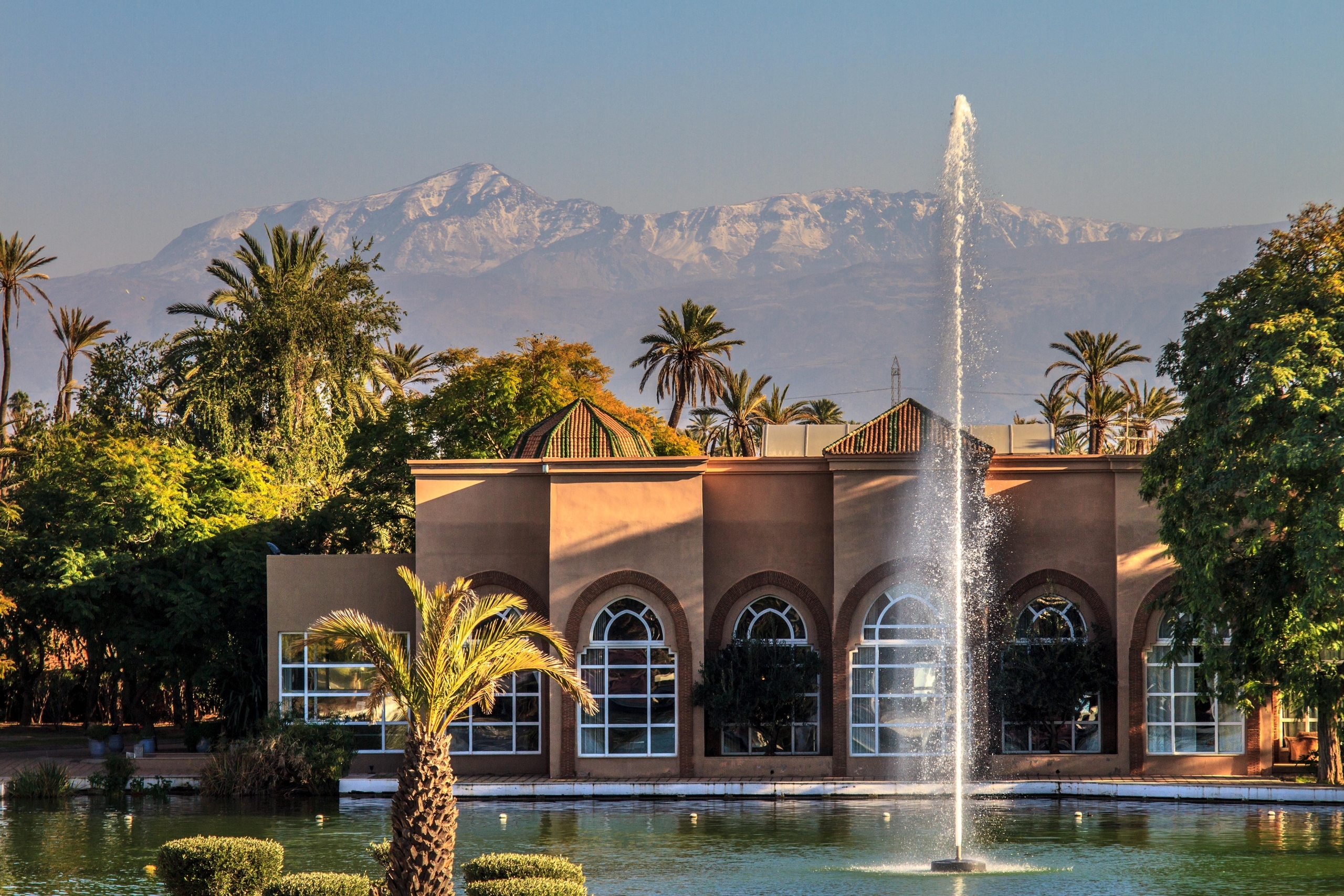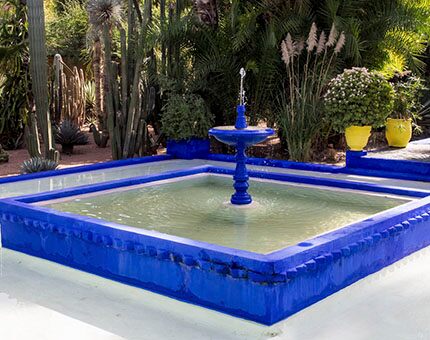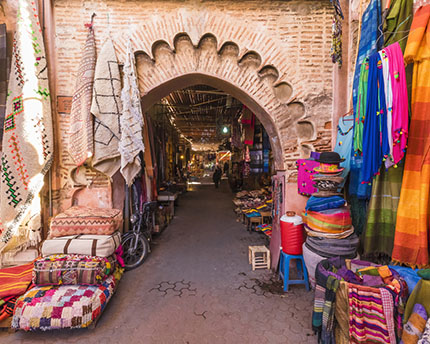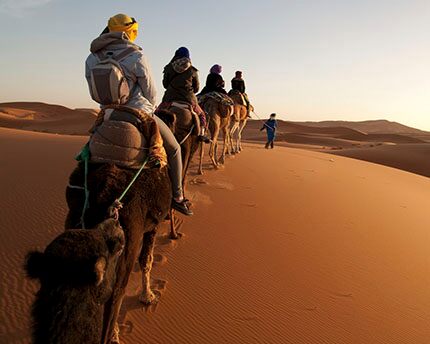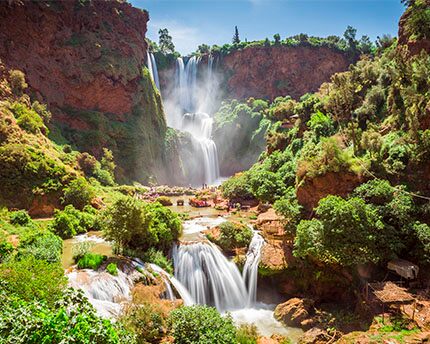Koutoubia Mosque: Marrakesh’s main monument
The Koutoubia Mosque and its 77-metre-high minaret is the most important monument in Marrakesh. Many other buildings are also essential stops when visiting the city, such as the Bahia Palace or Madrasa Ben Youssef, but none can compete with the Koutoubia in terms of relevance and popularity.
Firstly, because of its location, right in Jemaa el Fna Square; secondly, due to its 900 years of history; and thirdly, because no other building stands taller than its minaret, a landmark that can be spotted wherever you go in Marrakesh.
History of the Koutoubia Mosque
The first stone of today’s Koutoubia Mosque was laid in the middle of the 11th century and the first of the buildings that form part of this religious complex opened its doors in 1157. The second of the mosque’s great spaces opened a year later, together with the spectacular minaret. They were all built on the orders of sultan Abd al-Mu’min.
The complex was constructed on top of an earlier palace built in the Almoravid style. Like many other palaces, fortresses and mosques in the city, it was destroyed by the new Almohad governors of the city at the beginning of the 12th century.
The Almohads believed that the former rulers of the Almoravid Empire, of which Marrakesh was the capital, had strayed from the precepts of Islam and that their heritage and religious and cultural legacy should be removed.
As a result, it was decided that an enormous mosque should be built on the large site of the old palace, and this mosque is what you can still see today. Just like then, the Koutoubia Mosque is the largest in Marrakesh and its region. It’s also been the model that inspired other buildings in North Africa and even Al-Andalus in the Iberian Peninsula.
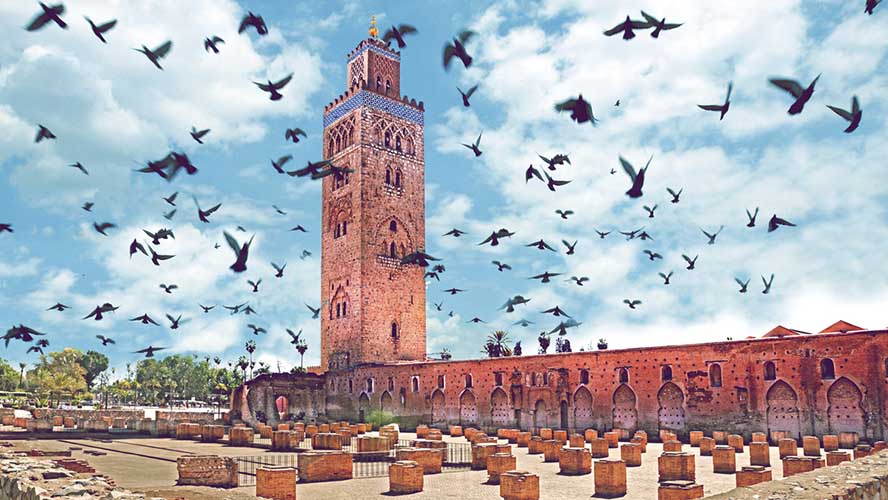

Birds at the Koutoubia Mosque
Koutoubia’s stunning architecture: style and periods
When visitors see the Koutoubia Mosque’s minaret for the first time, it often reminds them of other, far away buildings, especially the Giralda in Seville, which was also once a minaret and whose builders were inspired by this famous tower in Marrakesh.
The same is true of the Mosque of Hassan II in Casablanca, although this was built much later, in the 20th century.
The Koutoubia Mosque clearly inspired religious architecture across Morocco and other countries in the Maghreb, perhaps due to the precision of its proportions and its deceptively simple construction.
In fact, a large part of its walls, built in brick and large sandstone blocks, are decorated with fine filigree in stone and tiles, particularly on the inside.
The mosque has a T-shaped floor plan with 90 x 60 m rectangles and 13 m high walls. The interior is divided into 17 naves, with wooden ceilings supported by columns and pointed arches that are reminiscent of buildings from the same period in Spain, such as the synagogue of Santa María la Blanca in Toledo.
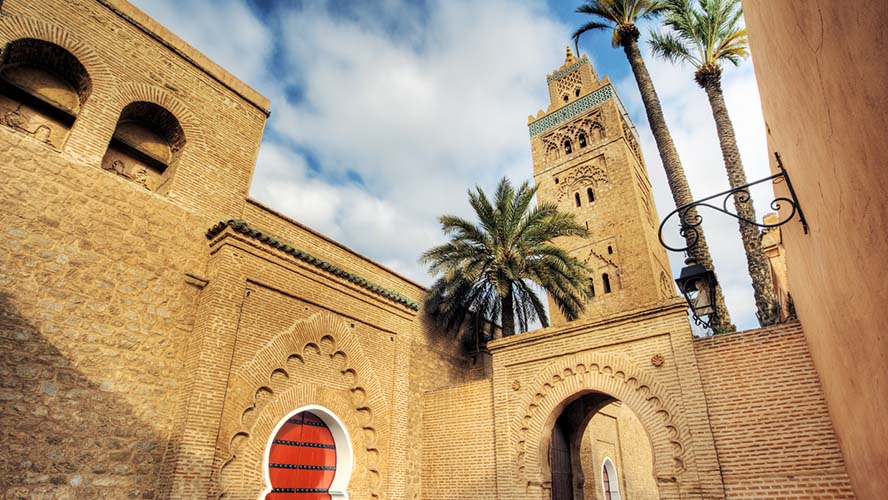

Another perspective of the Marrakech Mosque
But the most eye-catching feature of the Koutoubia Mosque is definitely its minaret, and the muezzin sings the call to prayer from this tower several times throughout the day. Instead of stairs, the upper part of the tower is reached via a complex system of ramps.
The minaret is crowned by a bronze, multi-sided dome, topped by a finial with three balls that decrease in size towards the top, in a style that is familiar from many other mosques in Morocco. Unfortunately, although the exterior of the tower was once decorated with paintings and tiles, much of this decoration been lost over time.
However, a strip of green-glazed tiles remains at the top of the main body and is one of the most easily recognisable features of the Koutoubia Mosque.
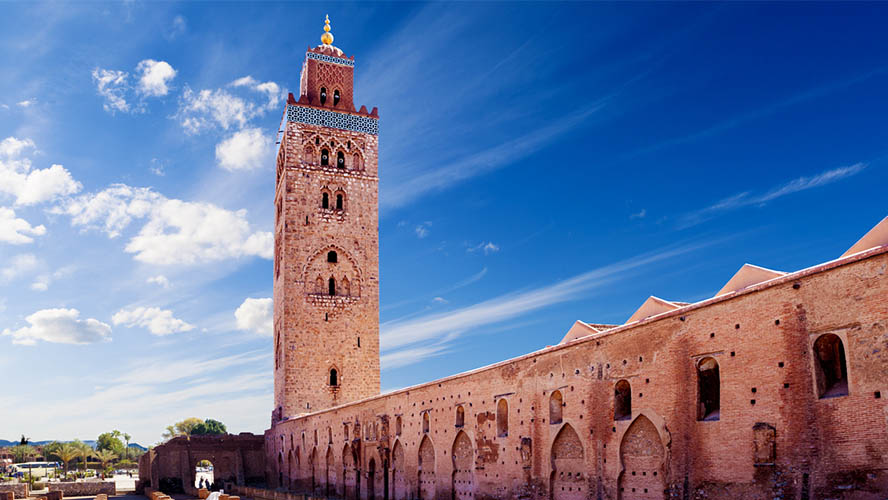

One of the must-see monuments on your visit.
Recommendations for enjoying the Koutoubia Mosque
The first thing to remember if you want to go inside the mosque is that entry is restricted to people of the Muslim faith. Non-believers can walk around the temple on the outside and admire its imposing walls and buttresses.
The best time to do this is first thing in the morning, even before the first call to prayer, when the square is quiet and your imagination can transport you back to the past. Having said that, magical moments can also be enjoyed at dusk, particularly when the sun outlines the great minaret against the horizon and turns the surroundings into something straight out of a film set.
Visiting on Friday morning, is also interesting; it’s the Muslim day of prayer and the faithful come here dressed in their finest white to pray. It’s a fascinating window onto human life that should be observed with all due respect.
The Koutoubia Gardens are open to all, and are found next to the side of the mosque that is closest to the Kasbah or Jewish Quarter. The gardens are lined with different species of palms, orange and other fruit trees and are an excellent spot for meeting others and relaxing that is popular with Marrakesh locals and visitors alike.
Frequently Asked Questions
¿Cómo llegar a la Mezquita de Koutoubia?
A pie: la Mezquita Koutoubia cierra uno de los laterales de Jemaa el Fna. Eso sí, después de superar un paso de peatones regulado por un semáforo que muy pocos conductores respetan.
En autobús: a la parada de bus Koutoubia llegan los buses de las líneas 1, 3, 4, 5, 6, 10, 11, 12, 14, 15, 16, 19 y 66.
¿Es posible visitar por dentro la Mezquita de Koutoubia?
No. La entrada a la Mezquita Koutoubia, como al resto de las de Marruecos y otros países del Magreb, está estrictamente limitada a los musulmanes. Por tanto, los no practicantes de esta religión deben limitarse a visitar los muros exteriores del templo y a admirarlo desde alguna de sus puertas. Por ejemplo, la situada junto a la Plaza Jemaa el Fna.
¿Cuándo se construyó la Mezquita de Koutoubia?
La construcción de la actual Mezquita Koutoubia comenzó a mediados del siglo XI y se prolongó hasta el año 1158, cuando se abrieron todos sus espacios. Todo ello, por orden del sultán Abdelmoumen.
¿Cuándo se recomienda visitar la Mezquita de Koutoubia?
El mejor momento para disfrutarla sin ajetreos es a primera hora de la mañana, sin embargo, no puedes perderte un momento tan mágico como es el atardecer, ya que te dejará grandes instantaneas. Es llamativo visitarla los viernes por la mañana, el día de oración, cuando los fieles se acercan hasta aquí, muchos de ellos vestidos de un blanco.


